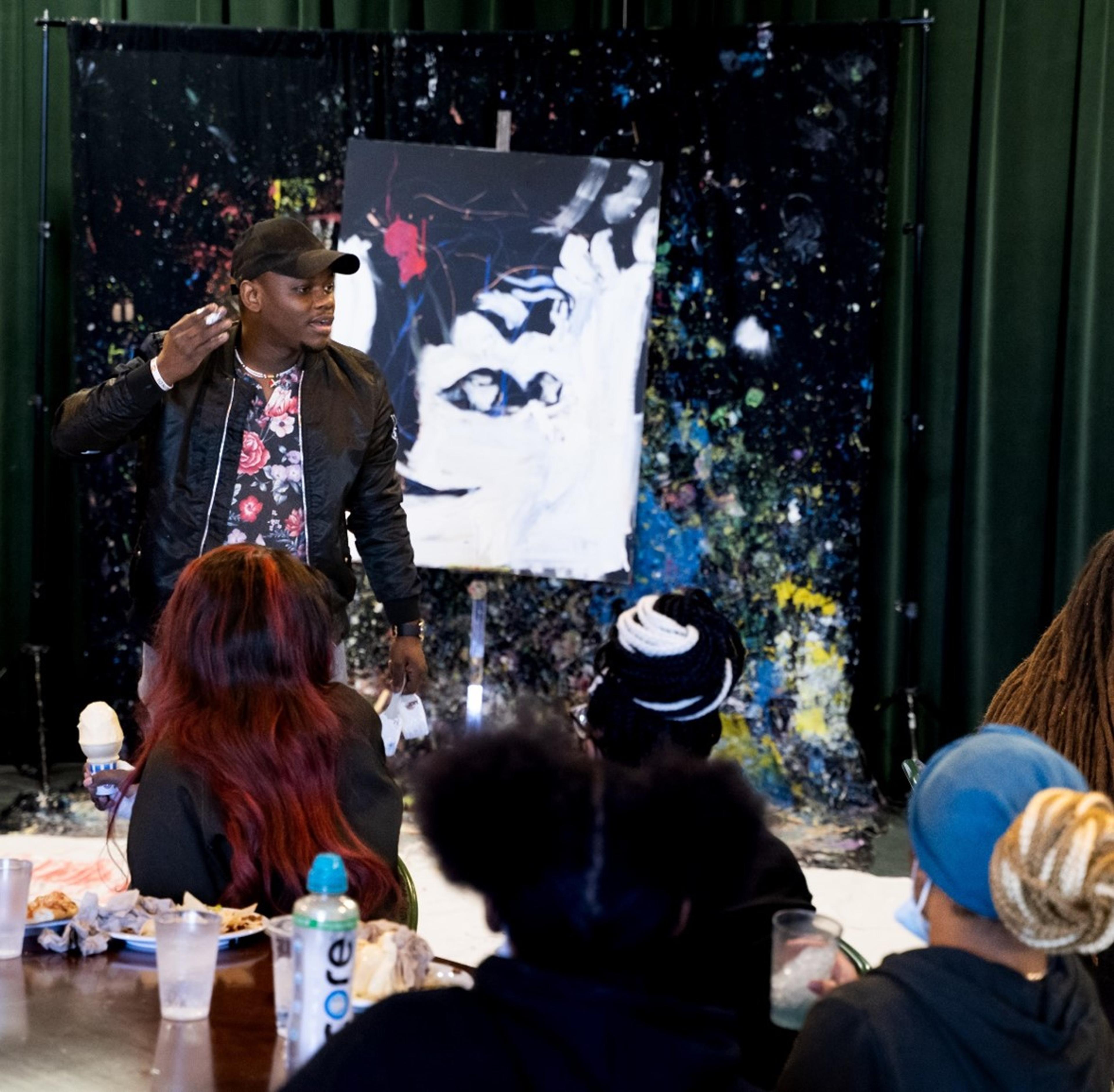Hank Willis Thomas
Black Survival Guide, or How to Live Through a Police Riot
About
In 2018, the Delaware Art Museum commissioned artist Hank Willis Thomas to respond to the powerful and community-changing public response that followed the assassination of Dr. Martin Luther King, Jr. on April 4, 1968. Combining historic newspaper photographs with the historic pamphlet Black Survival Guide, or How to Live Through a Police Riot, Thomas created a powerfully unique physical and visual viewing experience. The resulting work of art sheds light on the past in the context of today.
The past is always present. It is not always visible, but like the molecules that we are composed of, it is everywhere, ever-changing, and always part of us. – Hank Willis Thomas
In 2018, the Delaware Art Museum commissioned artist Hank Willis Thomas to respond to the powerful and community-changing public response that followed the assassination of Dr. Martin Luther King, Jr. on April 4, 1968. Protests were held throughout the nation and the world, and the civil disturbances in Wilmington were followed by a nine-month-long occupation by the National Guard that left an indelible mark on the community.
For this project, Thomas combined historic News Journal photographs with the historic pamphlet Black Survival Guide, or How to Live Through a Police Riot. Informed by the uprisings of 1967, Cold War-era nuclear fallout pamphlets, and guides published for African Americans to navigate institutional racism during segregations laws, the booklet serves as a practical manual for surviving an occupation. The guide outlines that police and media response will be followed by business closures, electricity outages, and travel restrictions. Provisions—food, water, and basic medical supplies—must be gathered, and those under siege must also know how to provide basic care for medical emergencies.
Thomas created a powerfully unique physical and visual viewing experience by combining image and text on retroreflective vinyl – a material widely used in road signage. The pages of the survival guide are activated when a flash of light catches the News Journal photograph underneath. Events on the verge of being lost to historical amnesia are revealed again.
With this rediscovery, the viewer is placed in the position of the many individuals who directly or indirectly experienced these events—city residents, firefighters, and National Guardsman. For Thomas, this is how the past remains current, and how the “holes of narrative history” are exposed.
Lender
Delaware Art Museum
Space Requirements
60 running linear feet/1,600 square feet, Darkened gallery space, Dedicated guard
Loan Duration
Sept 2021 through 2025, 12 - 18 week loan
Availability
Artwork Gallery
Partner Story
Listening to Communities and Providing Space for Healing
Duluth, Minnesota, home to The Tweed Museum of Art, is dominantly white with BlPOC making up only 2.3% of the population.
The Tweed Museum staff partnered with Art Bridges to bring the exhibition, Black Survival Guide, or How to Live Through a Police Riot, to their institution and pair it with programming initiatives that, for the first time in the institution’s history, would actively seek to engage Black community members.
According to museum staff, “In Duluth, there is no money for many areas in the cultural sector and very little has been done to promote Black artists.”

Discover More

New Available Groupings
Check out new groupings available to borrow from our Partner Loan Network lenders.
View the Groupings